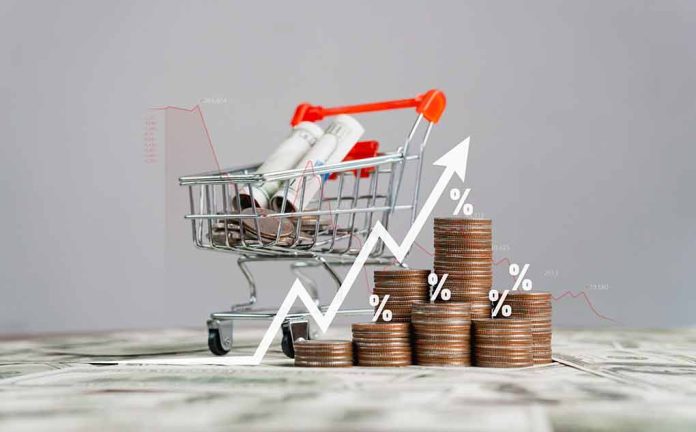
Unexpected easing in March inflation rates raises questions on the economic impact of President Trump’s tariff policies.
Key Takeaways
- Inflation slowed to a five-month low, rising 2.4% in March compared to 2.8% in February.
- Core CPI increased by 2.8%, steady with no change from February’s rate, excluding food and energy.
- President Trump initiated a 90-day pause on certain tariffs, affecting future inflation concerns.
- Tariffs on China hiked to 125%, signaling ongoing trade tensions.
- Economists warned of potential recession impacts due to the tariff policy.
March Inflation Data Reveals Trends
The March Consumer Price Index (CPI) revealed a slower-than-expected inflation rate at 2.4% over the past year, marking a decrease from February’s 2.8% figure. This decline is attributed to President Trump’s ongoing tariff strategies, which were temporarily paused for 90 days to mitigate economic tensions. March’s core CPI remained unchanged at 2.8%, showing resilience against volatile food and energy sectors. These numbers offer insights into the current economic landscape.
Financial markets responded cautiously to the CPI figures, with major index futures showing declines post-publication. Despite the easing inflation, analysts are skeptical of the long-term impacts of the temporary tariff suspension. Gasoline prices noted a 0.5% decline last month, having fallen nearly 10% over the previous year, aligning with broader energy price stability. This declining trend in gasoline prices is a modest relief amid broader economic uncertainties.
Impact of Tariff Strategies
President Trump’s aggressive tariff policies on China and other countries have sparked economic debates. While some tariffs have been temporarily paused, higher tariffs remain in effect, potentially influencing future price levels. Economists suggest that while tariff impacts on inflation are currently uncertain, they may contribute to recession risks if they persist unchecked. The deliberate balancing act of tariffs continues to challenge economic forecasts and strategic planning.
“Tariffs will snatch defeat from the jaws of victory,” said Samuel Tombs of Capital Economics, when discussing the battle against inflation.
Chair Jerome Powell of the Federal Reserve acknowledged that tariff policies had a role in price increases observed in February. Yet, he indicated that core economic indicators remain solid despite prevailing trade tensions. The economy’s resilience is evident in the low unemployment rates and overall strength. “Key indicators still show a solid economy,” Powell said.
Future Economic Considerations
Investors and policymakers alike must navigate uncertain waters as the effects of tariff policies continue to unfold. Despite a temporary halt on some tariffs, the broader implications and potential for increased inflation looms large. Analysts caution that prolonged tariff implementations could lead to a recession by elevating consumer prices, curbing spending, and hampering business activities. The ongoing dialogue between trade and economy remains critical as stakeholders endeavor to safeguard economic stability.
The complex interaction between tariffs and inflation poses challenges yet also opportunities for adjustment, strategic alignment, and policy finetuning. Trade tensions, while persistent, are countered by robust hiring trends, as March saw unexpected job market growth, exceeding economists’ projections. As economic fluctuations continue, maintaining a vigilant approach towards policy impacts is imperative.





